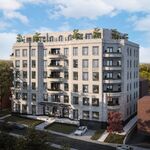New policies bring more Toronto sprawl
Lawrence Solomon
Financial Post
Saturday, March 25, 2006
A Toronto megalopolis, 150 kilometres in girth, will be born of the Ontario provincial budget announced this week. The budget's big-ticket transportation projects will drive this outcome through measures that will undermine public transit in the city while accelerating suburban sprawl in the Greater Toronto Area and beyond.
The Toronto subway system, rather than being expanded in the city's highly populated and underserved downtown areas, will instead be revamped to serve as a commuter rail line, extending to a rural highway in a regional municipality north of Toronto. The province expects as many as 100,000 extra suburban trips will be made daily on the new subsidized service, giving a big boost to suburban development.
In the sprawling suburban city of Mississauga, the province will subsidize the new Mississauga Transitway, a $259-million commuter project projected to carry up to 10,000 people per hour during peak periods.
In neighbouring Brampton, the province will subsidize the $280-million Brampton Acceleride commuter project, while in York Region, whose fast-growing population is up 50% in the last decade, the province will subsidize VIVA, the new express bus service connecting communities in York Region with each other and with the city of Toronto.
All told, the province estimates it will subsidize an additional 42 million transit trips, mostly involving suburban traffic, mostly enabling the suburbs to spread more quickly.
The province claims that many suburbanites will abandon their cars for transit -- and undoubtedly some will. But there's no fear that suburban highways will become underutilized. Suburban vehicles will soon materialize to clog any temporarily freed-up road space that becomes available and, to make doubly sure that automobiles don't lose ground in the suburbs, the province has been aggressively expanding the highway system outside Toronto. This is the best suburb-boosting budget since 1953, when the province created Metropolitan Toronto to develop the city's rural reaches, also by subsidizing roads and transit services that weren't viable in low-density communities.
The budget's biggest boost to the suburbs, although it isn't a big-ticket budgetary item, is the announcement of the new Greater Toronto Transportation Authority, a monopoly body that will control buses, commuter trains, streetcars, RT, subways and regional roads throughout the Greater Toronto Area and beyond. The goal seems laudable: to reduce gridlock and encourage public transit use from Oshawa in the east to Burlington in the west. As a convenience to customers who now must transfer from one public transit company to another, and deal with a different fare system whenever they do, the new GTTA plans to use "smart card" technology that would seamlessly service commuters from Oshawa in the east to Burlington in the west.
Smart-card technology is long overdue and a sensible move. In the United Kingdom, where it became most advanced after public transit was deregulated and then privatized two decades ago, smart-card technology has proved a convenience that helps London's many transit companies compete effectively with the car. The GTTA, which will rely upon U.K. smart-card technology, will inevitably use it to overcharge urbanites to subsidize suburbanites. We've gone this route before.
Before the province created Metropolitan Toronto, the Toronto Transportation Commission was the most successful public transit company on the continent, providing excellent service and running its bus, streetcar and trolley routes on a money-making basis. With the creation of Metro and the conversion of an independent TTC into a politician-run agency, business discipline gave way to political manipulation. Politicians began to redraw TTC routes based on where their voting constituents resided, rather than where paying customers could be found. The result was ruin.
To please politicians intent on pleasing their constituents, the TTC compromised in maintenance and cut back service on profitable city routes in order to service unprofitable suburban ones. Urban customers balked at the rough ride they were now subjected to and deserted the system. In the end, virtually all TTC routes became money losers and the TTC became the welfare case that we see today.
As bad as the TTC has become, it is still the giant in the region. The TTC's ridership of 430 million passengers a year is several times all other GTA transit systems combined and its 2,500-vehicle fleet and other resources are prime prospects for plunder by regional politicians. With the TTC under the sway of a regional authority, rather than Toronto politicians, it will necessarily be made to serve regional interests. TTC resources will increasingly be put at the service of suburbanites, degrading its performance in the city and causing city dwellers to abandon it. To make up for lost revenue, the city will raise taxes, forcing businesses to flee. To get those taxes back into city coffers, politicians will then turn to amalgamations.
This is how the city of Toronto came to absorb the suburbs that were once part of Metropolitan Toronto. This us how a Toronto of the future will come to absorb the suburbs of the GTTA.




